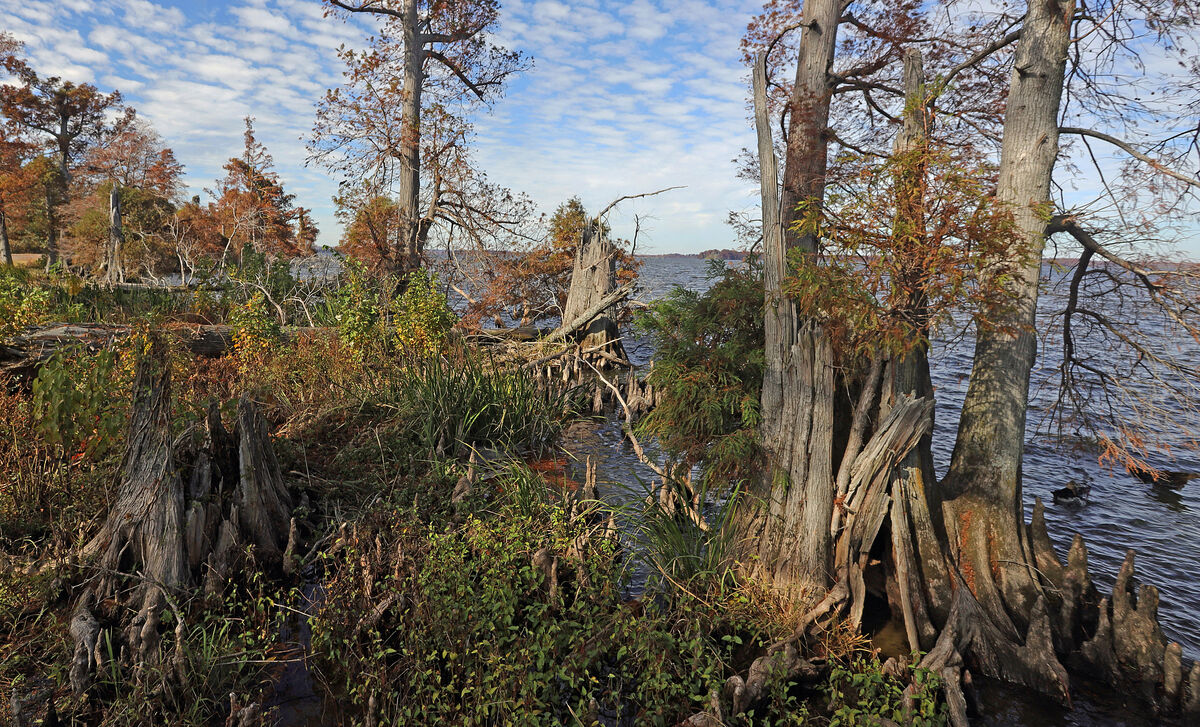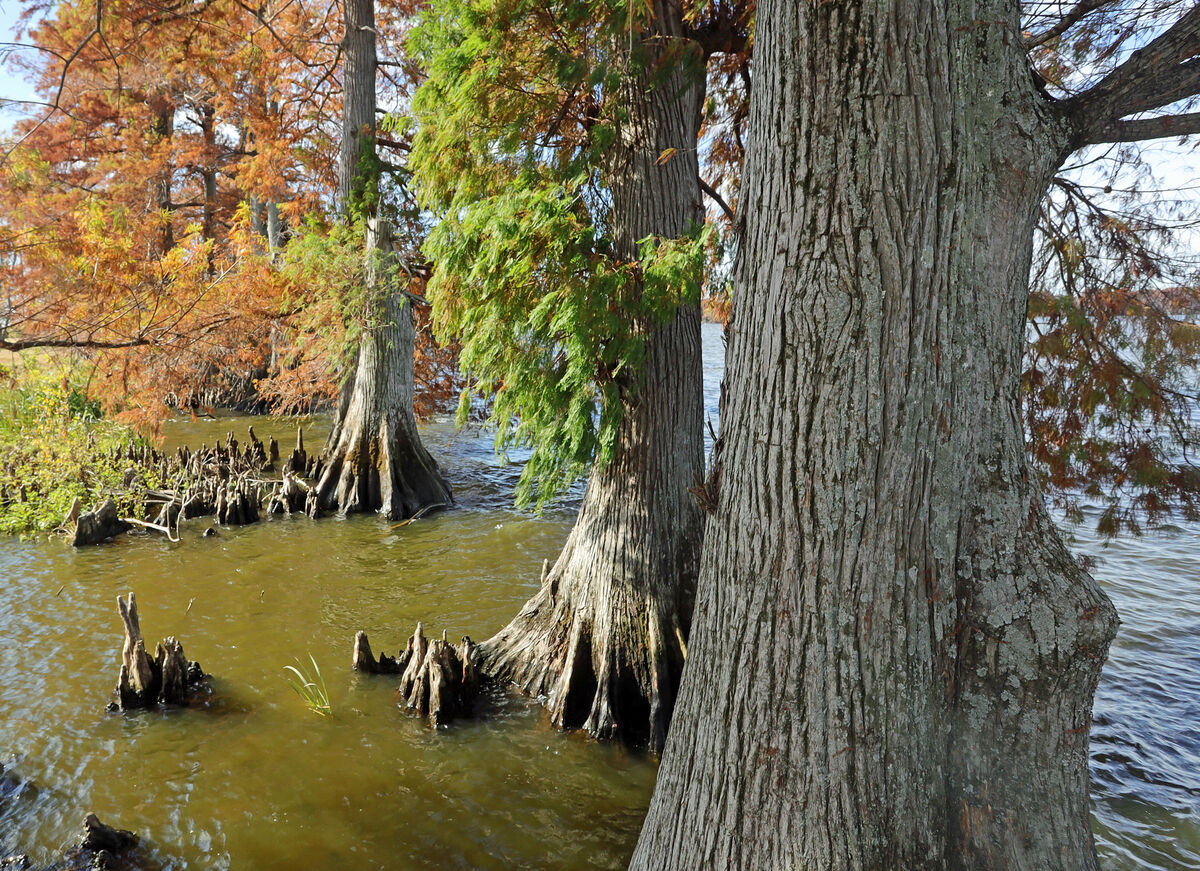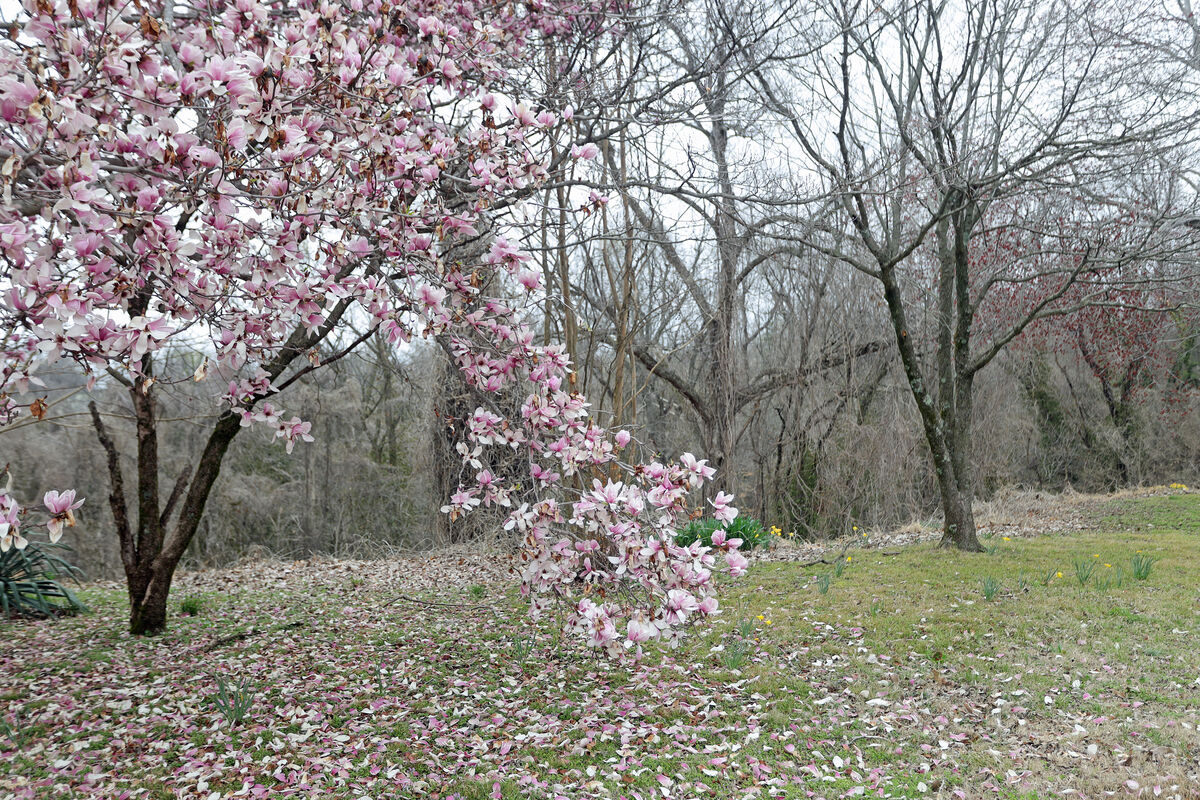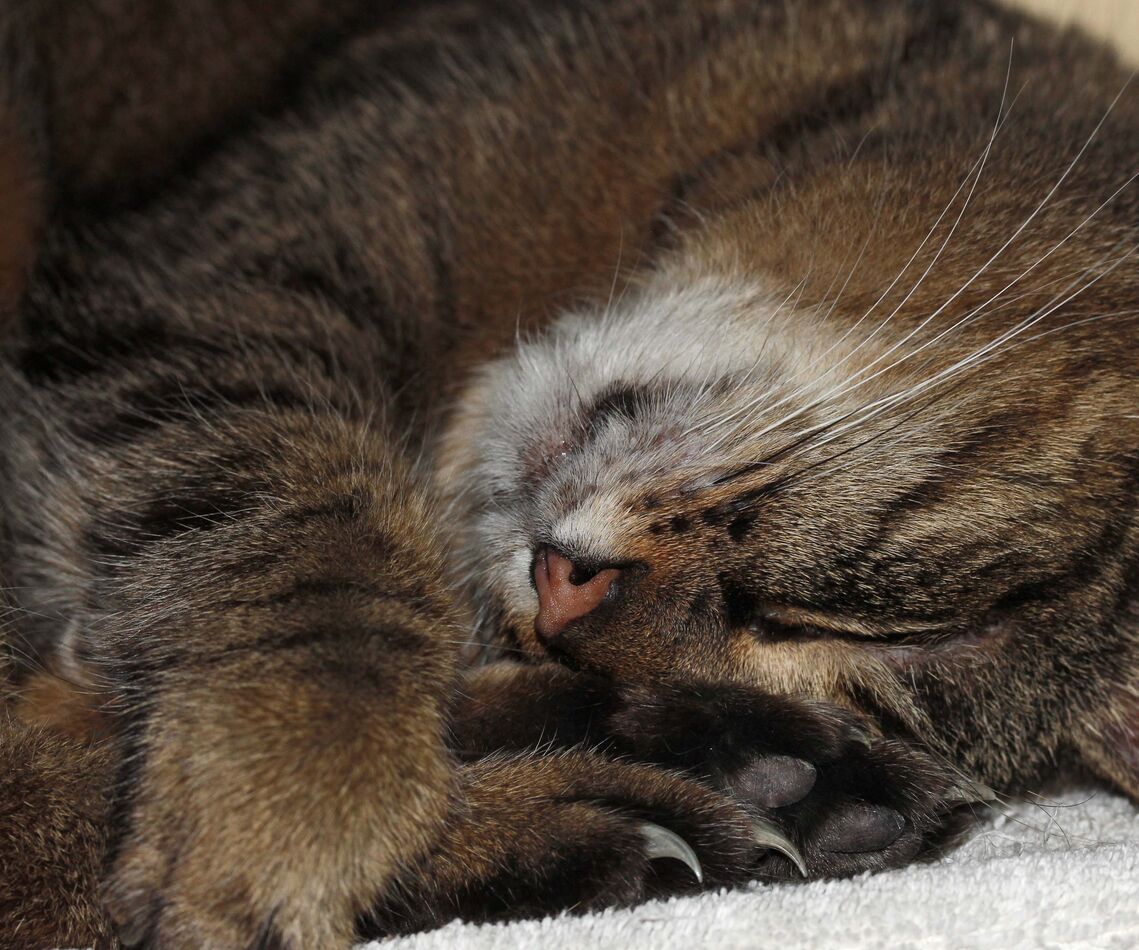Posts for: Charles 46277
Mar 8, 2024 10:02:45 #
The Capt. wrote:
Thanks everybody. A lot of people thought this is a mating dance , but no, they are fighting over a perch on the bird feeder.
Thanks--it is often hard to tell the difference, yes?
Mar 6, 2024 21:05:37 #
Mar 6, 2024 20:58:48 #
Today in the nice weather I took a couple of photos in my yard which I call Kudzu Heights, looking down over the vast Kudzu Bottoms; in a way, the winter kudzu behind is more mystical in winter. I am still very much pleased moving up to full frame mirrorless Canon R5, this with the 17-40mm L lens.
The cat Maggie cannot be bothered today. Same lens.
The cat Maggie cannot be bothered today. Same lens.
Jan 23, 2024 16:13:48 #
Longshadow wrote:
That's a supposition, correct?
I have an editor that can edit a .CR2 file, but I doubt print houses can print from it.
Editing software and printing software are not necessarily created equal........
I have an editor that can edit a .CR2 file, but I doubt print houses can print from it.
Editing software and printing software are not necessarily created equal........
Yes--the supposition is taken from the fact that PhotoShop works with both, so...
I assumed your print houses can read and edit any common format--and save it to a printable format.
Jan 23, 2024 15:49:20 #
Charles 46277 wrote:
LF, PhotoShop once in the beiginning might not have understood TIFF, but but it reads both TIFF and JPEG just fine now. Hasselblad's own editing software, Phocus, edits either one. But Phocus opens Hasselblad pictures raw as TIFF. When you edit and choose to save, you can save in either format. So surely any publisher or print house can deal with either.
p.s.
Whatever edit sofware you use, say Photoshop, you can save an image either as JPEG or TIFF, and print each or look at both on the monitor. Sometimes I think I see a difference favoring TIFF--it may depend on the nature of the image, or upon the degree of enlargement.
Jan 23, 2024 15:44:20 #
Longshadow wrote:
Do you know if all/most print houses accept TIFF files?
I'd love to see the same print from a TIFF and a JPEG.
I'd love to see the same print from a TIFF and a JPEG.
LF, PhotoShop once in the beiginning might not have understood TIFF, but but it reads both TIFF and JPEG just fine now. Hasselblad's own editing software, Phocus, edits either one. But Phocus opens Hasselblad pictures raw as TIFF. When you edit and choose to save, you can save in either format. So surely any publisher or print house can deal with either.
Dec 22, 2023 09:43:28 #
jerryc41 wrote:
I'll be receiving twenty-seven in a few days.
I've also been watching "The Lone Wolf" movies. There were about two dozen of them dating from 1917. I've been watching them from the late 1930s through the 1940s. Most starred Warren William.
I've also been watching "The Lone Wolf" movies. There were about two dozen of them dating from 1917. I've been watching them from the late 1930s through the 1940s. Most starred Warren William.
Jerry, many people think B-movies are just cheap, bad movies, but they were made to run with top films as a double-feature, often only one hour, but because of their limited budgets, they were often very creative in techniques and the acting was as good as most big-budget films. For instance, in the late 40's the B-movies were first to permit an actor continuing to speak while walking into another room. Limited lighting also was perfect for dramatic effects and became standard in film noir.
"Casablanca" used all the B-movie techniques (there was a war on, and everything was scarce)--it starts with a view of the town, which was obviously just a drawing, and many scenes were night or dimly lit interiors, and at the end, the airport scene was added later--they used a local airport at night, added fog and a plywood plane. The script and the acting, and the photographic quality, of course, made it an A-movie all the same. The ending was added because Jack Warner would not endorse Bergman leaving a perfectly good frenchman husband for the likes of Bogart. This way, everybody did their duty and stood against Hitler.
Dec 20, 2023 14:20:01 #
Manglesphoto wrote:
I remember sitting up Mom and watching Charlie Chan movies on late night TV in the early 1950's
Warner Oland played Charlie Chan
Warner Oland played Charlie Chan
In the 1950's, Bette Davis said that Warner sold rights to all their old movies to a TV distributor for $40,000!!! That included "Casablanca" and "The Maltese Falcon." That is why we got to see all the great ones on afternnon matinees via local stations. At the time, nobody thought old movies were any use after a second run in neighborhood theaters. There was no way to play them at home.
Can you imagine if you had an Ansel Adams print and somebody declined to see it, saying, "No, I've seen that one..."?
Dec 20, 2023 13:59:58 #
jerryc41 wrote:
I watched a Charlie Chan movie from 1939 last nigh... (show quote)
Even B-films like that are fascinating to me. One of Alfred Hitchcock's greatest films was "The Lady Vanishes," which involves spies and ruthless evil European powers--without naming them--on a train bound west in Europe (bringing coded military plans back to England). It was 1938, and it is obvious who the unnamed tyranical villains were. The film was remade lately (Netflix, I think) in color, but the old B&W was more colorful.
Hitchcock's film, "The Thirty-Nine Steps" was around that time as well (equally memorable), with the same unnamed brutal foreign agents at work, smuggling secrets eastward out of Britain to unnamed enemy powers. The homeland British traitors looked very much like the aristocratic pro-nazi organization at the time, Moseley's British Union of Fascists (America had them too--"America-Firsters"). When war came, they mostly shut up, or other people shut them up, except for Lord Haw-Haw, who joined Germany's broadcast to Britain, "Germany Calling" throughout the war.
By the way, Warner Bros. was the first to call a spade a spade with Germany. MGM made a lot of money in Italy and Germany, and they were slow to criticize them (though all the moguls were Jewish). Obviously the films would not be shown in those countries if they were critical.
When the Blitz came, though, MGM jumped in with both feed with the Oscar-winning film, "Mrs. Miniver," which Churchill called the best weapon (so far) against Germany that America had produced.
https://www.youtube.com/watch?v=QXXHxxSZZ8A
Dec 13, 2023 13:49:42 #
One of the photos was first edited in the Hasselblad software, and they use TIFF, so it was saved as TIFF from raw. Those have a bit different look... don't know whether it is any better or worse. Sometimes I think TIFF is a better look, sometimes not.
Dec 13, 2023 13:45:26 #
CHG_CANON wrote:
If you had stored the images, we might point to something about the images that explains the differences in the colors you're seeing.
Sorry, I remembered that after posting--I think one was stored-original
Dec 13, 2023 13:11:10 #
Has anybody been to Reelfoot Lake in NW TN? It is 11 miles long, formed in 1811 by a major earthquake. It was filled by the Mississippi River, which is no longer connected (it moved). Daniel Boone said he climed a tree and watched it being created.
I finally got a mirrorless camera, Canon R, and for these shots I just took one lens (Canon EF 17-40 F4 L). I do see a difference with full frame, after many years of the 650D Canon (Ti4 Rebel). The pics look right on my monitor, but may be a bit dark here--didn't feel like tuning them up, but there is plenty of leeway there.)
The lake is wooded with Cypress trees, which grow along the shore and in the water itself. These pictures were taken a few weeks ago. The State Park is in a Federal wildlife refuge that extends into Kentucky close to my house over the River, and it has lots of eagles to see in winter.
https://www.reelfootlake.com/
I finally got a mirrorless camera, Canon R, and for these shots I just took one lens (Canon EF 17-40 F4 L). I do see a difference with full frame, after many years of the 650D Canon (Ti4 Rebel). The pics look right on my monitor, but may be a bit dark here--didn't feel like tuning them up, but there is plenty of leeway there.)
The lake is wooded with Cypress trees, which grow along the shore and in the water itself. These pictures were taken a few weeks ago. The State Park is in a Federal wildlife refuge that extends into Kentucky close to my house over the River, and it has lots of eagles to see in winter.
https://www.reelfootlake.com/



Dec 11, 2023 17:48:29 #
burkphoto wrote:
It depends on the context... my favorite answer fo... (show quote)
As usual, I agree with you on all that. The subject matters, too--I like smaller apertures for general scenes, but my key factor is: Is it more important that one plane of focus be razor sharp, or the whole scene? In landscape views people tend to want the whole thing to be in focus, while the edge-sharpness of this or that is less critical--and fine detail in the distance is also less critical.
Also, classical old-time portraits had to use larger apertures because a lot of light was required for photos--not because they wanted to soften the focus; but if you want to soften the focus in a portrait or other picture, the larger apertures can do that while softening the rest.
I think many people over-do the large-aperture-for-background-blur bit, but that is certainly always an option
Nov 20, 2023 09:34:03 #
srt101fan wrote:
Interesting and valuable commentary.
I hope you would agree that some "captured" images can also exhibit a level of artistry. Some of Cartier-Bresson's work comes to mind (even though he didn't think of his photographs as art).
I hope you would agree that some "captured" images can also exhibit a level of artistry. Some of Cartier-Bresson's work comes to mind (even though he didn't think of his photographs as art).
Yes, I would agree with that--the amount of artistry in illustration varies. The artistry of Cartier-Bresson is in the very artful selection of the right moment and being ready to exploit it skillfully. (Compare to Norman Rockwell's artful illustrations.) The skill of spiders in catching food can certainly manifest art in it in their preparation and waiting for the decisive moment.
Nov 19, 2023 11:11:04 #
Ellen101 wrote:
I do like your concept of "Capture a situation in a photo.." That's what a true artist ascribes for.
I like it too, but capturing suggests it is taken as it is, like putting a wild animal in a cage to look at, whereas the artist uses what is, to create what isn't, yes? Much of photography may be what is called illustration rather than art, but some photography--using technology, skill, and inspiration, makes an image that sees beyond the obvious (or even the visible). The artist might select one feature of a scene and isolate it, emphasize it, change it in color, shape, perspective, brightness, even sharpness. (A photo may even be modern art.) An illustration shows what anybody can see, while art shows what the artist contributes as a vision the artist had in mind. Certainly most people driving past Hernandez at moonrise did not see something important to create. Naturally the degree of illustration and the degree of art vary greatly when a photograph is made.
One part of the mind is passive and absorbs the world around us in perception, but but there is also an active part of mind (Aristotle called it "nous") that projects itself into the world around us (for instance making order out of a complex situation, or classifying things as alike or different in some intelligent way, etc.) Illustration is perception, while art is the work of nous. But even illustration may inject some art into it, the way the illustrator Norman Rockwell did in making illustrations. Adams called it visualizing the image you want to create out of a view.

